IJCRR - 4(13), July, 2012
Pages: 127-132
Date of Publication: 18-Jul-2012
Print Article
Download XML Download PDF
DSP BASED START -UP TECHNIQUE FOR BRUSHLESS DC MOTOR
Author: J.Sathish, M.Pulidevan, G.Premsunder
Category: Technology
Abstract:Three phase BLDC motor used in automotive application have good efficiency and good controllability over wide range of speed and to align the rotor position of BLDC motor by suitable starting method. Based on electromotive force the position is sensed by without current sensor. Stator current and time period alignment of rotor position is adjusted by pulse width of switching device. The additional current sensor and any information of motor parameter not necessary at start up operation. The fundamental principle of technique is to determine the initial position of permanent magnet by the time period of discharge of stator winding , which are excited before discharge. For this purpose , an approach a new flux linkage function is defined , that is speed independent .Experiment are implemented on a single chip
DSP controller to demonstrate the suggested starting up technique. A starting procedure of the motor is also discussed to detect the rotor position at a standstill. The position sensorless drive is proposed in this
paper based on the detection of back emf technique especially at a lower speed. Moreover the complex phase shift circuit eliminated. Due to low cost ,the proposed control algorithm is particularly suitable for cost sensitive products. The output of the proposed system is verified by matlab
simulink.
Keywords: bldc- brushless direct current motor, emf –electromagnetic force, dsp-digital signal processor, ASD- adjustable speed drive.
Full Text:
INTRODUCTION
Brushless dc motor have been put into practical use because of high efficiency and good controllability .A brushless dc motor require an inverter and a position sensor to perform ? commutation‘ because a permanent magnet synchronous motor takes the place of dc motor with brushes and commutator. Unfortunately, there are several practical implementation problems when using the phase to neutral zero crossing detection method. Firstly, the neutral voltage is required for comparison with the nonconducted back EMF or the average terminal voltage, in which it will introduce high commonmode noise . The other problem is the requirement of the phase shift (delay time) circuit. Since the zero crossing points of the conventional back EMF method are inherently leading 30 electric degrees of the ideal commutation points, a precise velocity estimator and a phase shift circuit (algorithm) are needed to process the zero crossing signals so that accurate commutation points can be determined.
The additional open loop starting process and a complex phase shift circuit accompanied with a precise velocity estimator make the sensorless commutation much more complex than the Hall effect sensor based commutation. As a result, it is not surprising that the cost of the commercial sensorless commutation ICs is usually several times higher than that of the Hall effect sensor based commutation ICs. In order to cope with the aforementioned problems, a new cost effective sensorless commutation method is proposed. Instead of detecting the motor terminal to neutral voltage, the estimated commutation signals are extracted directly from the specific average line to line voltage of a BLDCM using simple single-stage low pass filters and low cost comparators . The output signals of the new detection circuit can be directly applied to the conventional commutation table, as if they were obtained from the real Hall effect sensors. That is, the estimated commutation signals are well in phase with the ideal commutation points. Unlike conventional solutions, the proposed method does not require additional virtual motor neutral voltage, complex phase shift circuits, or precise speed estimators. Therefore, in terms of cost and reliability, the proposed approach has obvious advantages over conventional solutions.
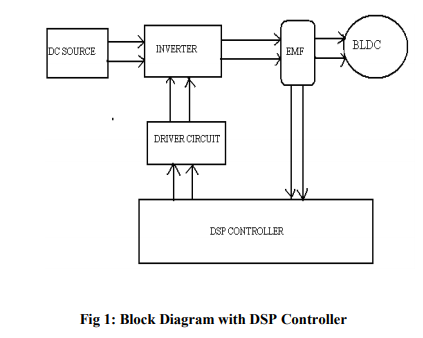
Instead of detecting the motor terminal to neutral voltage, the estimated commutation signals are extracted directly from the specific average line to line voltage of a BLDCM using simple singlestage low pass filters and low cost comparators . The output signals of the new detection circuit can be directly applied to the conventional commutation table, as if they were obtained from the real Hall effect sensors. That is, the estimated commutation signals are well in phase with the ideal commutation points. Unlike conventional solutions, the proposed method does not require additional virtual motor neutral voltage, complex phase shift circuits, or precise speed estimators. Therefore, in terms of cost and reliability, the proposed approach has obvious advantages over conventional solutions. Several experiments have been conducted to demonstrate the feasibility of the proposed approach. The output signals of the new detection circuit can be directly applied to the conventional commutation table The results indicate that the proposed method exhibits satisfactory performance over a wide speed range under varying load conditions and different back EMF waveforms. These characteristics suggest that the proposed method is very suitable for cost sensitive applications such as home appliances, computer peripherals, automotive components, etc.
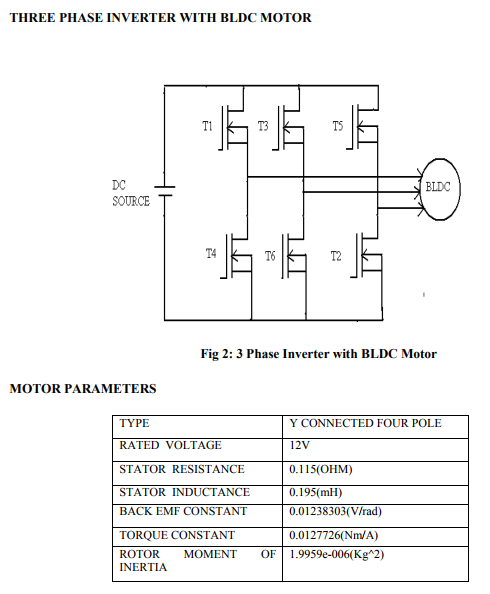
SIMULATION WAVE FORM
Line to Line Voltage Simulation has become a very powerful tool on the industry application as well as in academics, nowadays. It is now essential for an electrical engineer to understand the concept of simulation and learn its use in various applications. Simulation is one of the best ways to study the system or circuit behavior without damaging it .The tools for doing the simulation in various fields are available in the market for engineering professionals. Many industries are spending a considerable amount of time and money in doing simulation before manufacturing their product. In most of the research and development (R&D) work, the simulation plays a very important role. Without simulation it is quiet impossible to proceed further. It should be noted that in power electronics, computer simulation and a proof of concept hardware prototype in the laboratory are complimentary to each other. However computer simulation must not be considered as a substitute for hardware prototype. The objective of this chapter is to describe simulation of impedance source inverter with R, R-L and RLE loads using MATLAB tool.
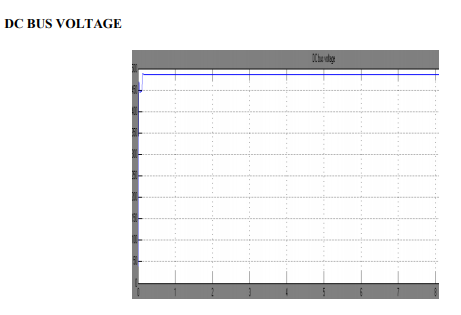
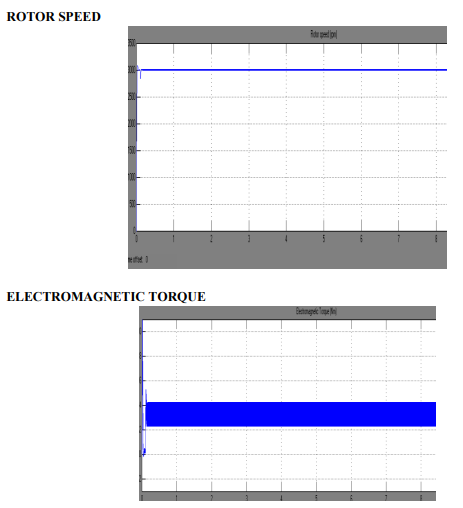
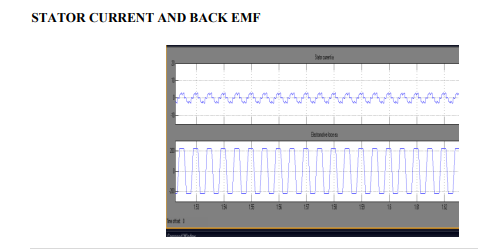
CONCLUSION
This method proposed start-up technique without the additional current sensor to align the rotor position of BLDC motor and accelerate the motor from stand still upto a desired speed where the position sensorless control algorithm based on the back emf could work properly. Both stator current and time period for aligning the rotor position can be easily controlled by modulating the pulse width of specific switching device. The neutral voltage is not required in the proposed method , only three motor terminal voltage need to be detected. The experimental results have revealed that the phase relationship is sensitive to operating speed and load condition. The amplitude of line to line voltage is significantly larger than the phase voltage , even a small back emf effectively detected. The proposed method can be used for BLDC motor with non ideally trapezoidal waveform. Since most BLDC motor do not have ideal back emf waveform. Speed estimation algorithm and complex phase shift are not required. Consequently the proposed method is particularly suitable for cost sensitive application such as home appliances and related computer peripherals.
References:
1. N.Matsui,?sensorless PM brushless dc motor drives? IEEE Tran.
2. S. Ogaswara and H. Akai , ?an approach to posis5tiomn senseless drive for brushless DC motor? , IEEE trans .
3. G.H Jang. J.H park and J.H. Chang. ?position detection and start up algorithm of a rotor in a sensorless ?BLDC motor utilizing inductance variation .
4. Y.S Lai, RF.S. Shyu and S.S.Tseng,?new initial position detection technique for three phase brushless dc motor without position and current sensors? ,IEEE trans.
5. W.J Lee, and S. K. sul ?a new starting method of BLDC motors without position sensor?, IEEE trans .
6. T.H. Kim and M.Ehsani, ?senseless control the BLDC motors from near zero to high speeds?,IEEE trans.
7. Cheng Hu and Ming Yong Cheng, ?a new sensorless control scheme for brushless dc motor without phase shift circuit?, IEEE Trans.
8. M.Tursini,?initial rotor position estimation method for PM motor?, IEEE Trans.
|






 This work is licensed under a Creative Commons Attribution-NonCommercial 4.0 International License
This work is licensed under a Creative Commons Attribution-NonCommercial 4.0 International License